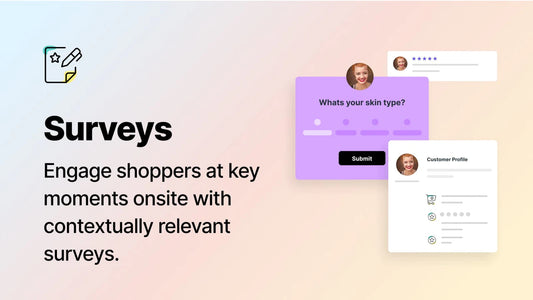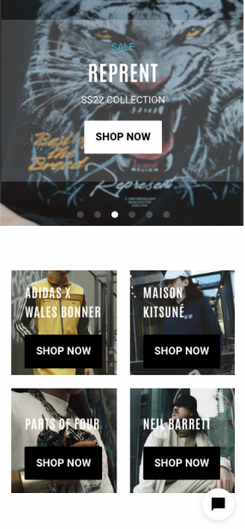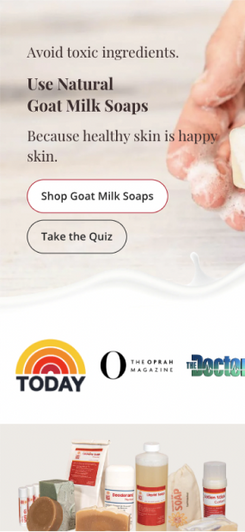Diving into the world of email marketing and staying afloat is no easy task. Yes, thousands of businesses are doing it, but that doesn’t mean that they’re doing a good job of it. From engaging copy and eye-catching visuals to on-point segments and flows, there are many aspects to get right to achieve email marketing magic. And after checking all of these items off, you are still left having to evaluate your email performance.
Luckily, this is one of the easier things to do, thanks to Klaviyo’s robust reporting dashboard which is incredibly effective at bringing your most important insights straight to you, enabling you to make the best decisions for you and your business. But when you want to compare your performance to others in the industry, what can you do?
The solution: benchmarks!
In this blog, we’re going to talk you through these metrics, what can affect them and how you can use these to enhance your email marketing strategy and increase your revenue!
What are benchmarks?
A benchmark, by dictionary definition, is a standard or point of reference against which things are compared. In this case, our Email Marketing benchmarks will be an average cost or percentage seen across all Klaviyo Emails.
Benchmarks can also be defined by industry. For example, the apparel industry will have different benchmarks compared to the B2B industry. For this blog, we’re going to focus on a handful of industries within eCommerce, but if you’d like to know the benchmarks for your particular industry, there are loads of resources online or check out Klaviyo’s blog.
Klaviyo Email Benchmarks
To make sense of email benchmarks, a few key metrics are used that evaluate email performance: Open Rate, Click Rate, Conversion Rate and Revenue Per Recipient.
You might be familiar with Open Rate and Click Rate, as is every marketer. But these are only a small piece of the puzzle as these metrics only show the amount of customers opening and clicking on emails and not how profitable your emails are.
This is where Conversion Rate and Revenue Per Recipient come in, providing insight as to whether your emails are actually making you money. Klaviyo’s Benchmarks Report helps us understand each industry’s performance when it comes to these important metrics and we’re going to dive into this year’s report to help you gauge where your business is at in the grand scheme of things.
Campaign Performance
Even though we love email campaigns, they’re not always as effective as we’d all like them to be. People are getting emails literally all day, every day. They’re signed up to lists they didn’t even know they signed up for and are receiving monthly email campaigns bombarding them with information they probably don’t need. That’s why getting customers to convert using campaigns can be hard work.
However, using Klaviyo’s segmentation powers, you can choose to send out your monthly newsletter, blog updates or literally anything else you want to the customers who are actually engaging with your content and who want to hear from you. Now your email campaigns are landing in the right inboxes, driving traffic to your site and pushing up sales!
Whether you’re already doing this or are yet to dip your toe into these unprecedented waters, take a look at the benchmarks for Klaviyo email campaigns pertaining to different industries and see how you compare:

Flow Performance
If you know us at Blend, you know how much we love flows.
Flows are a series of emails sent to a customer based on a trigger or event. For example, if someone signs up to your mailing list, they may be added to a Welcome Series flow. Flows are especially great because they only send emails to customers who meet the requirements of the trigger, giving your company a greater shot at converting customers. Throw the magic of segmentation into the mix and you’ve got yourself some serious email game!

Klaviyo has made it incredibly easy for brands to get going with flows through a wide assortment of flow templates that can be built upon and edited to suit different companies’ goals.
However, most businesses make use of 4 main flows: Welcome Series, Cart Abandonment, Browse Abandonment and Post Purchase Flows.
Because each of these flows has a different purpose, each one also has its own set of benchmarks.
Let’s break each of these down:
Welcome Series
When a person signs up to your mailing list, what’s the first thing you’re going to send them? Most of the time they’ll be sent a welcome email. With impressive conversion and open rates, a welcome series is a great way to kick off your engagement with new customers and reach them when they’re most interested. Whilst it’s tempting to simply send an email going into as much detail as you can about your brand and all your products, research has shown that breaking this email down instead into a series of more concise emails that educates the customer about your brand, values and products is most effective for conversion as well as customer lifetime value.
The averages across all industries are:

Abandoned Carts
These are usually one of the first flows to be set up by an eCommerce store because of the significant impact they tend to make on the revenue of a store. If a member of a mailing list adds to cart, and then abandons it, these flows are designed to recapture the potential purchase. The customer has already shown high interest in your products, therefore, these flows are highly targeted, perfectly on time and have conversion rates that are on average, 3x greater than other flows. It’s no wonder these are popular when we want to analyse our emails.
Here are the benchmarks across all industries:

Browse Abandonment
Alongside your abandon cart flows you could consider targeting people who have abandoned their browsing. Sending an email flow to those who have left your store without purchasing could be a smart way to recapture some of those potential sales, especially when they have an average open rate of over 50%. These flows are great for giving your subscribers a nudge in the right direction.
The averages across all industries are:

Post Purchase
More than ever Post Purchase Flows have become very important. You usually trigger this flow after your customers have purchased. It's a great way to show your appreciation for their purchase and drive engagement that will make them remember your brand and come back to buy again. Since the primary goal of this flow is retention rather than sales, it usually sees high open rates and low conversion rates.
The averages across all industries are:

How to Improve Email Performance
There are a number of factors that can influence your email marketing and put you above or below these benchmarks. The good news is these are all factors you can change and test with your emails. And as mentioned before, you can easily test changes using Klaviyo’s A/B testing capabilities to create two variations of the same email to optimise your performance. Here are our 5 tips for you to consider:
Make it personal
The era of one-size-fits-all email campaigns is over. Blanket marketing emails are usually not well received by customers and that is why brands need to make personalization a key aspect of their marketing strategy. Think of how many promotional emails you receive every single day -- the people on your list are no different. You need to understand that even if someone opens your email, they will most likely delete it before scrolling down unless you grab their attention. Personalising the beginning with a simple, "Hi [recipient's first name],' can help to engage the reader enough to get them to at least begin to read your offer.
One of our favourite personalisations to use is Dynamic tags. They offer a more granular way to personalise email content but keep it simple at the same time. By using these tags we can personally address our emails with our subscriber's first name.

Up your subject line game
The subject lines of your emails should be catchy if you want the recipients to open them. Most people usually scan the subject line to determine if the email is worth opening and if the subject line doesn’t capture their attention right away, the chances of them deleting the email are very high.
For personalisation purposes, include the recipient’s name on the subject line. Then give a compelling description of the email to give the reader an idea of what the email is about. If you are emailing them about your latest offer, have it in bold on the subject line to get the user excited about opening the email. When developing your subject lines you need to pay attention to the character count. Long subject lines could get truncated and as such, the recipient may not get the intended message. Most people also usually open emails on their phones and this means that your subject line should be short for it to fit on the screen on a mobile phone. And if you want to make it even more exciting, throw some emojis into the mix and get your email to stand out.
Segmentation is your friend
Your users are basically at different points of the customer journey and your email marketing campaign should be tailored to reflect this. There are those who are still on the onboarding stage and as such, your email communication should strive to help the customers familiarise themselves with the company and the products offered. There are those who have tried your products and liked them. Your communication should, therefore, aim to inform them of other products or services that you are offering for them to try.
Segmenting your email list will help you achieve more favourable open rates and click-through rates. By sending messages to targeted groups within your list, your audience finds your message more relevant, which ultimately provides you with better results. Every list has subscribers who are interested in different types of offers -- coupons, news or special events -- segmenting allows you to give your buyers what they want.
Make sure you’re mobile-friendly
The majority of your customers are going to be opening your emails on their mobile devices, so it's important that you use an email template that's responsive. Using Klaviyo, you can choose from a range of beautiful templates that not only help you get up and running but are responsive and deliver your message perfectly across all devices and screen sizes.
You can set text and heading sizes to reflect differently on mobile, as well as make certain elements of your email visible on either desktop, mobile, or both.
To that end, opt for a single-column design that works well with the vertical scroll. Use big images and bold headlines and include plenty of white space for easy scanning. Keep your subject lines short. Lastly, make sure your CTA buttons are large enough to be easily tapped.
Give your customers what they want
If you’re really looking to get that extra edge when it comes to engaging your audience, including product blocks in your emails is a great way to do this. Klaviyo makes it easy, allowing you to bring products straight from your store into your customer’s inbox. You have the option of displaying your best selling products or going one step further and personalising them.
Personalised recommendations show your customers alternative products that they have either shown interest in or have bought something similar. These personal recommendations help tailor your emails to your buyers, bringing content to them that they will be most interested in based on their purchase and browsing history. There’s no better way to make your customer feel seen, valued and appreciated by you. To do this in Klaviyo, either add or open your product block and select ‘Populate from Feed’ for your content. You can then either choose yes or no to turn personalised recommendation on or off.

Run with it
Now that you know what this year’s benchmarks are, use this data against your own so you can compare how well your business’ email is performing with others across Klaviyo. It’s important to remember though, that every business is different in their goals and objectives which means you’ll need to select the benchmarks that are right for you.
Klaviyo has now also created a new tool called Benchmarks, which allows you to see how you're performing to your industry directly in the platform using visual statuses and graphs. You can read more about Benchmarks here.








